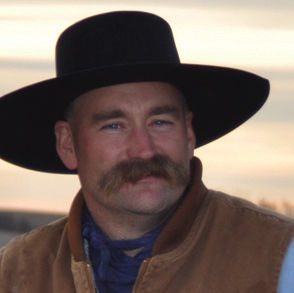I am now a 20-year veteran in the trenches, fighting the folks who have been trying to put animal agriculture out of business. I must admit that the most recent turn in their strategy even caught me off guard.
For years it has been the most confined animals that were the cause for their greatest concern. In fact I think many cattlemen would be confident that their grazing animals would never be targeted. Well, if you ever thought that you were wrong. Grazing cattle have recently been the primary target and honestly it wasn’t until post election that the reason finally hit me—land.
I just read the transcript from a major media interview conducted in 2017 that really broke down how land is used in the United States. When the person being interviewed answered that cows were at the top of the list, the host laughed as if she must be joking. So how much do we know about land use in the U.S. alone?
Grazing animals clearly top the list placing that use above and beyond forest land. So let’s take a close look at what the U.S. Department of Agriculture tells us:
“Range and pasture lands are located in all 50 states of the U.S. Privately owned range and pasture lands makes up over 27% (528 million acres) of the total acreage of the contiguous 48 states. In addition another 155 million acres of government owned land and these lands constitute the largest private lands use category, exceeding both forest land (21%) and crop land (18%).
More than one-third of U.S. land is used for pasture—by far the largest land-use type in the contiguous 48 states. And nearly 25% of that land is administered by the federal government, with most occurring in the West. To the tune of 158 million acres.
Most grazing lands are considered either range or pasture, but grazing lands also include grazed forest lands, grazed croplands, haylands, and native/naturalized pasture. These other land use types make up an additional 106 million acres of privately owned grazing lands, or about 17% of the total U.S. grazing lands. These other types of grazing lands provide a significant forage resource for U.S. livestock production.
Even though urban areas make up just 3.6% of the total size of the 48 contiguous states, four in five Americans live, work and play there.”
So it is my assessment that folks have figured out that cattle grazing is the primary purpose for most of our land mass. Here is the fact that I cannot find anyone talking about: Nearly 75% of the U.S. land mass is not suitable for growing crops, although they are very well suited for growing cellulose material that ruminant animals upcycle into nutrient dense human nutrition.
So at the end of the day, I am confident that the outright attack on the cow comes squarely back to control of the land. A University of Chicago law professor spoke in North Platte, Nebraska, back in 2007 and said, “Land ownership by an individual is problematic and was a lousy idea.” We have now reached the point that folks who live in the “confined people areas” are trying to dictate how we live in the country.
There is plenty of rhetoric about how “we just need to come back together in unity” since the recent election. These folks’ sense of “unity” is that we check in at the gate every morning and ask what our tasks are for the day. I stand by the fact that the cow is God’s greatest creation, right behind the human being. Then again the folks who take issue with cows don’t think God exists either. The truth is on our side and we need to relentlessly share the importance of the entire cycle, including how cows improve human and planet health.
Incrementally, one little step at a time when we may not be paying attention, the powers that be continue to erode the freedoms that our great country was founded upon. We need to take a stand, fight for our rights as citizens and landowners and not be bullied by big money “do-good” organizations or the government into giving up what rightfully belongs to us. Look at history and get this runaway freight train stopped before it completely goes off the rails.
Editor’s note: Trent Loos is a sixth generation United States farmer, host of the daily radio show, Loos Tales, and founder of Faces of Agriculture, a non-profit organization putting the human element back into the production of food. Get more information at www.LoosTales.com, or email Trent at [email protected].
